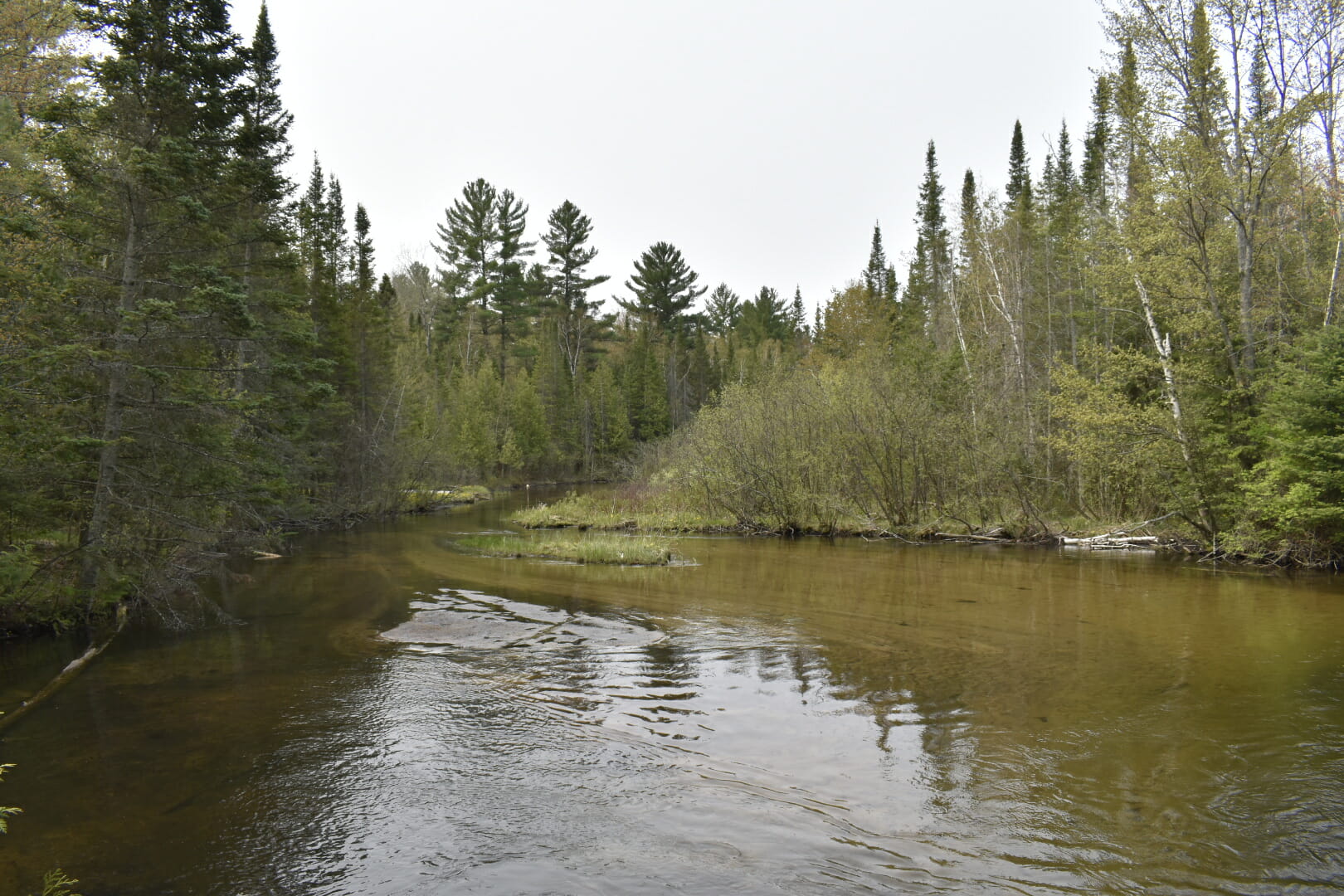Dam removals offer hope for coldwater trout in the face of climate change.
For Bryan Burroughs, dam removals are the key to trout habitat restoration in the face of climate change. They have the potential to cool long stretches of river even more than climate change is expected to warm them over the coming decades.
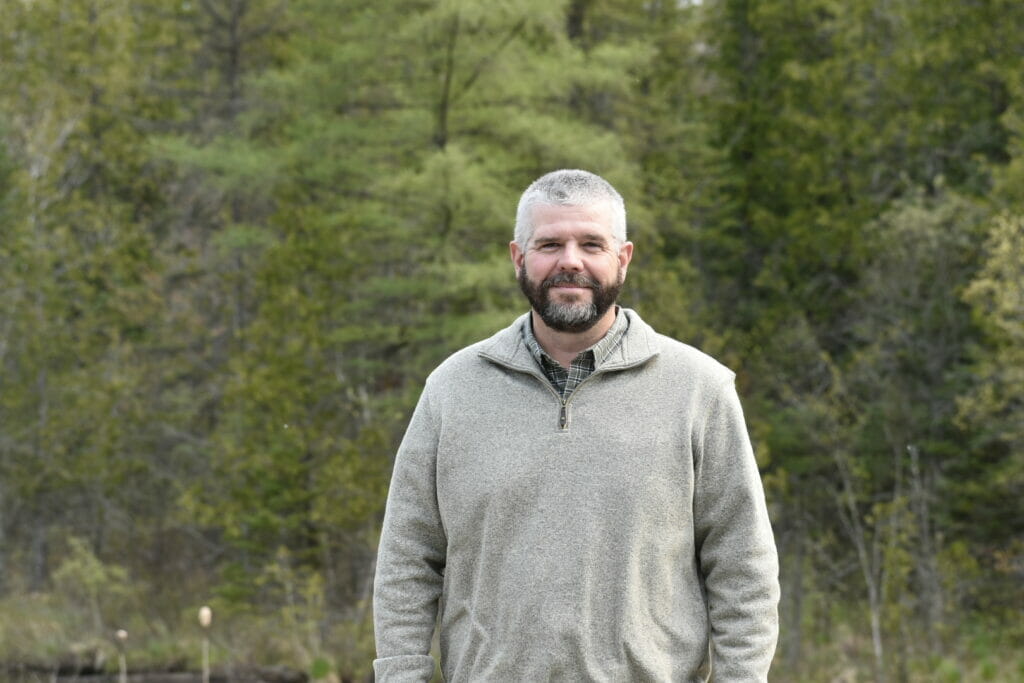
“Dam removals are incredibly important to us because you not only get fish passage through them, allowing them to move to other areas of the river that they need, but in the Midwest, you get temperature benefits,” said Burroughs, the executive director of Michigan Trout Unlimited.
And he has the charts to prove it.
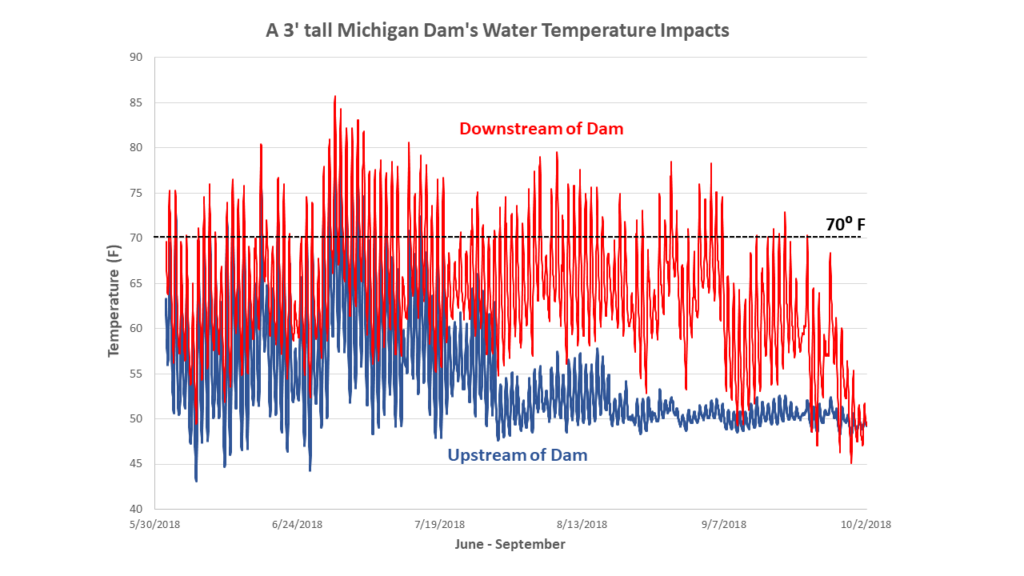
“We have dam removal projects where we could see downstream from a dam it was getting over 75 degrees 30 times in a summer, and after the removal, it’s hitting maybe 70 degrees during a one-week period every year,” he explained. He also has charts showing similar differences between cooler upstream and warmer downstream reaches of other Michigan dams prior to removal.
As water temperatures approach 70 degrees and higher, dissolved oxygen in the water decreases and trout are more stressed, increasing mortality. “It makes the difference between a trout population that is holding at lower densities, and a thriving, healthy one,” Burroughs said.
Burroughs showed his charts to Shannon Estonez, assistant secretary of Fish and Wildlife and Parks at the U.S. Department of Interior, at a dilapidated, decades-old, private dam on the Au Sable River during a warm day in May. Also in attendance were officials from the Michigan Department of Natural Resources (DNR), the Mason-Griffith Founders Chapter of Trout Unlimited, the local township and riparian landowners.
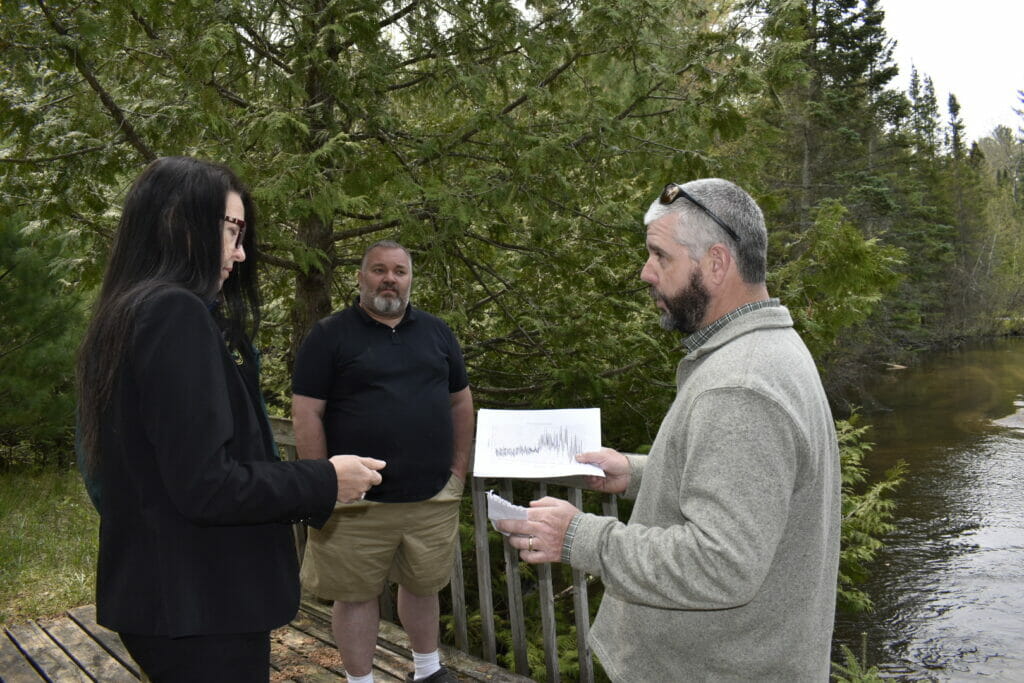
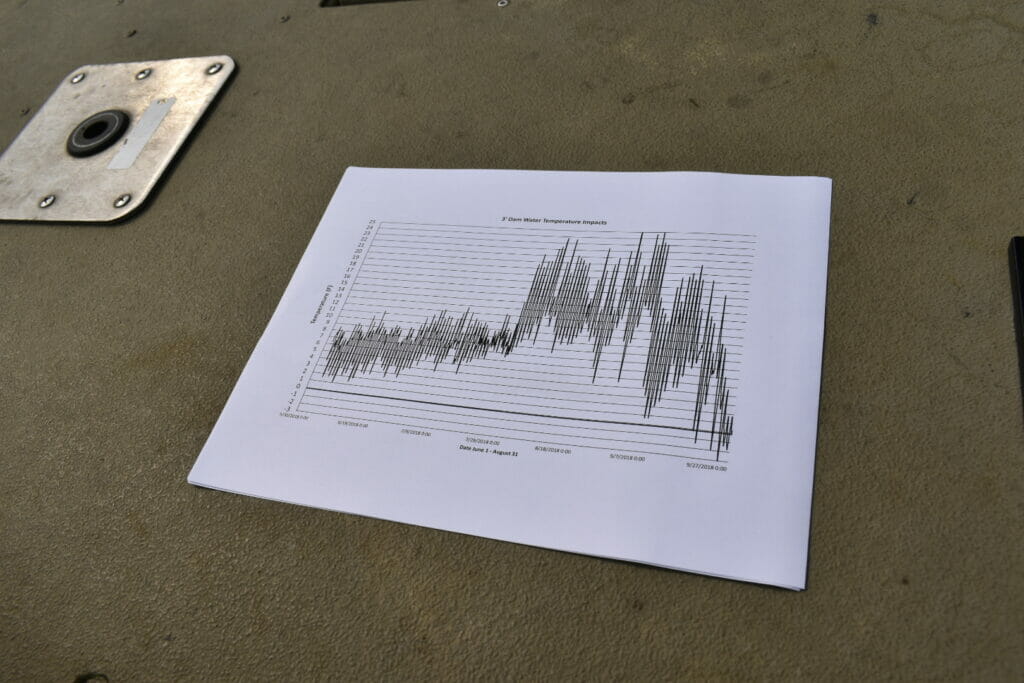
Estonoz was visiting projects sites in Michigan funded by the inaugural America the Beautiful Challenge, a public-private partnership to invest in locally led projects including those that restore rivers, reconnect watersheds, and improve flood resiliency, and funded in part by the Bipartisan Infrastructure Law of 2021. Dam removal projects like this check all of those boxes.
This dam removal will open access for trout to the upper two miles of the Main Branch of the Au Sable River and another eight miles on its two headwater streams above that. The iconic Au Sable River watershed is a Priority Water for Trout Unlimited and the site of its founding in 1959 at the streamside cabin of George Griffith.
The private dam was constructed decades before that to supply electricity to a house, long since replaced by electric service to the area. The dam constricts the river and creates a high velocity and perched barrier to all but the largest trout, as well as a deep plunge pool below long used as a swimming hole. Above the dam, the river widens and shallows, allowing it to warm faster. The dam housing building is falling apart, and the dam itself shows obvious signs of degradation with cracked concrete and exposed rebar.
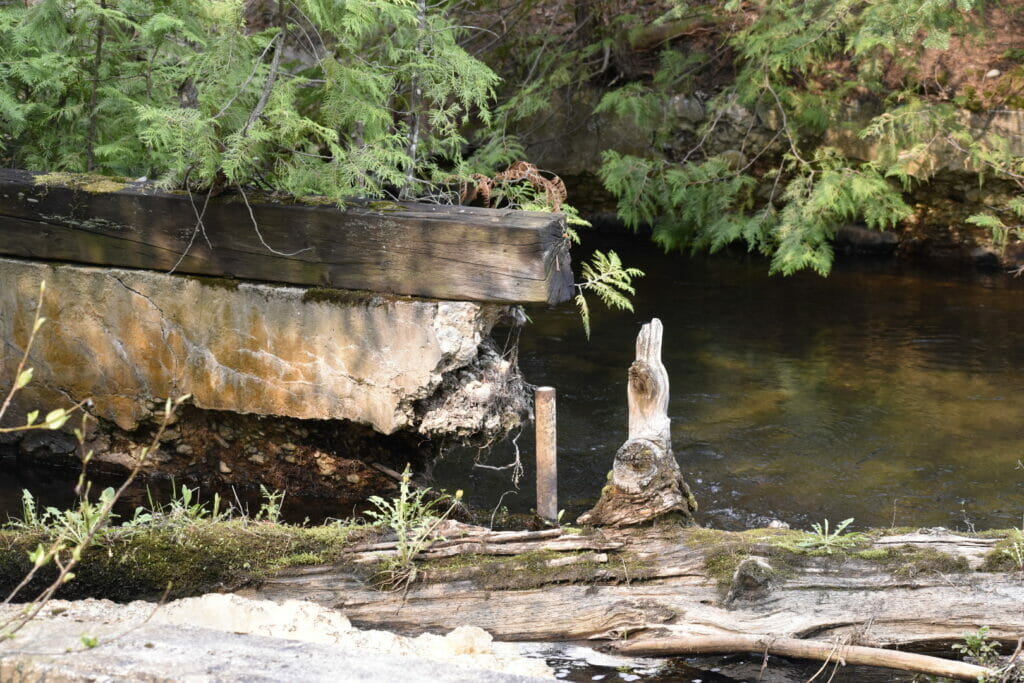
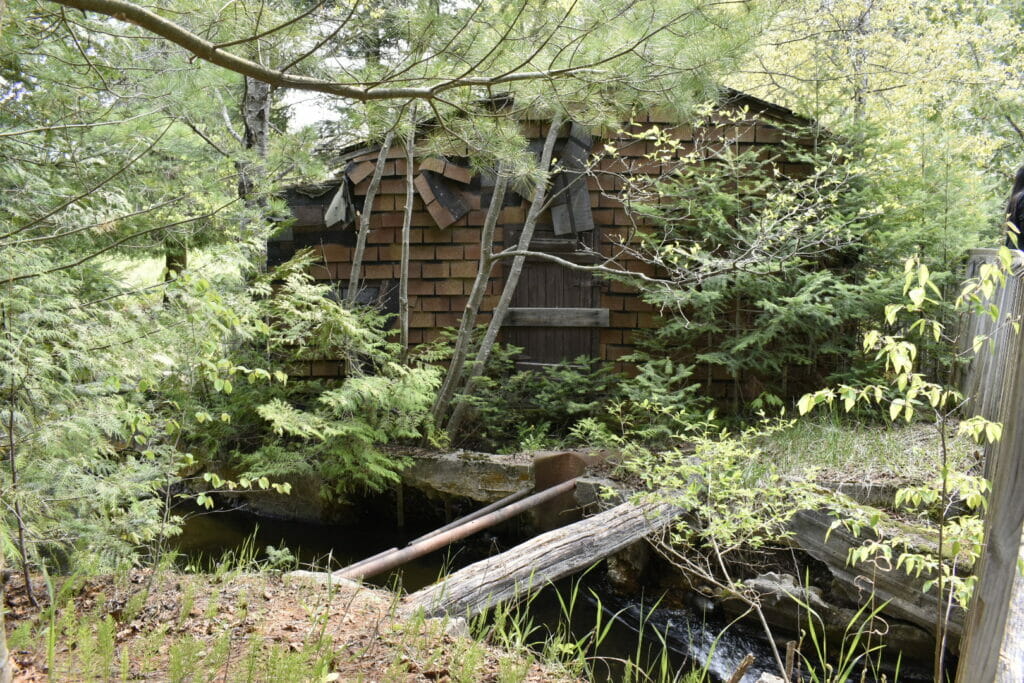
Brandon Gabriel, Frederic Township Supervisor, first flagged the dam as a safety hazard and, as an angler, he understood its impact on trout. However, he knew the family that owned it and knew it would be terribly expensive for them to remove on their own.
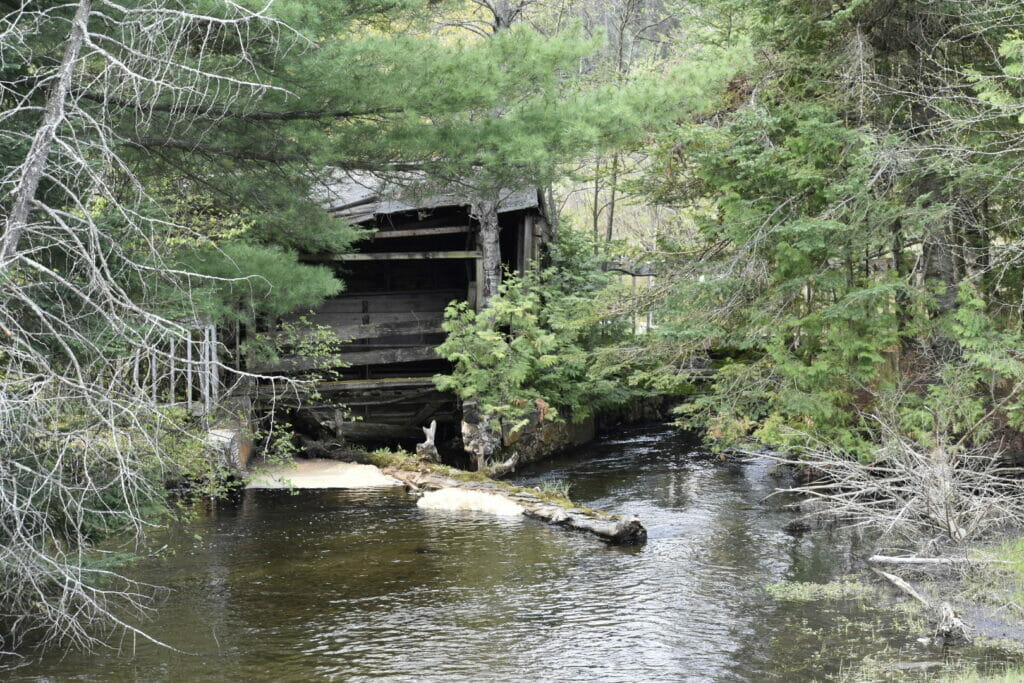
“I was reading an article about dam removals one day and I talked to Karen Harrison, president of the Trout Unlimited chapter, and I asked if there was anything we can do.”
“I know exactly who to call,” Harrison told him. She is the president of the Mason-Griffith Founders Chapter of Trout Unlimited, which works on the Au Sable River.
Harrison contacted Burroughs, who was able to include the project in the Michigan DNR’s successful America the Beautiful Challenge application. Michigan TU will manage the dam removal on a $150,000 subgrant from the Michigan DNR.
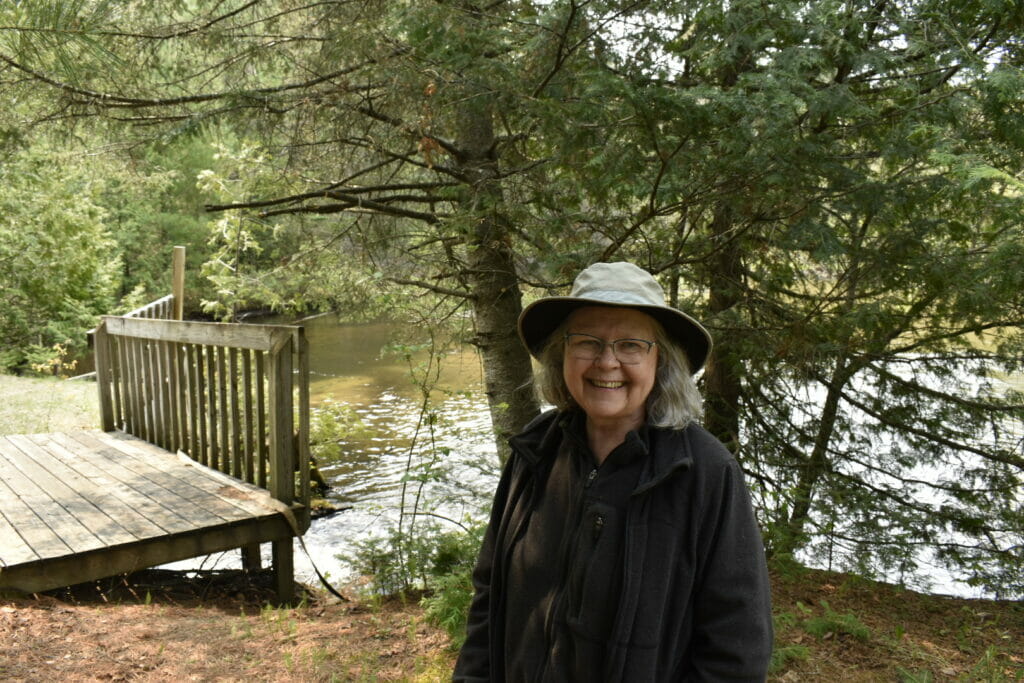
“This is exciting because this is the headwaters of the river, and our chapter has worked on the headwaters a lot,” Harrison said. “This will just open up a lot more of the stream and help out fish passage.”
“This is exactly the kind of thing that we want to invest in: It has on-the-ground support, locally, and the idea came from the ground,” Estonez said. “We don’t want to come in and say, ‘here’s $8 million, now go and do what we think you should do. Rather, you come to us and say ‘we need $150,000 to do something really awesome.’ That’s the kind of conservation we really want to be investing in.”
It’s one of 27 successful projects that the Michigan DNR was able to fund through the America the Beautiful Challenge that will reconnect over 200 stream miles.
“Through this $5 million funding, we have identified 24 dams and three poorly designed culverts,” said Scott Whitcomb, Michigan DNR Deputy Director. “It’s a big package, one pot of money, multiple NGO funders, federal support, and then state coordination. It’s the federal, state, and local all coming together to do conservation on the ground. It’s a perfect situation.”
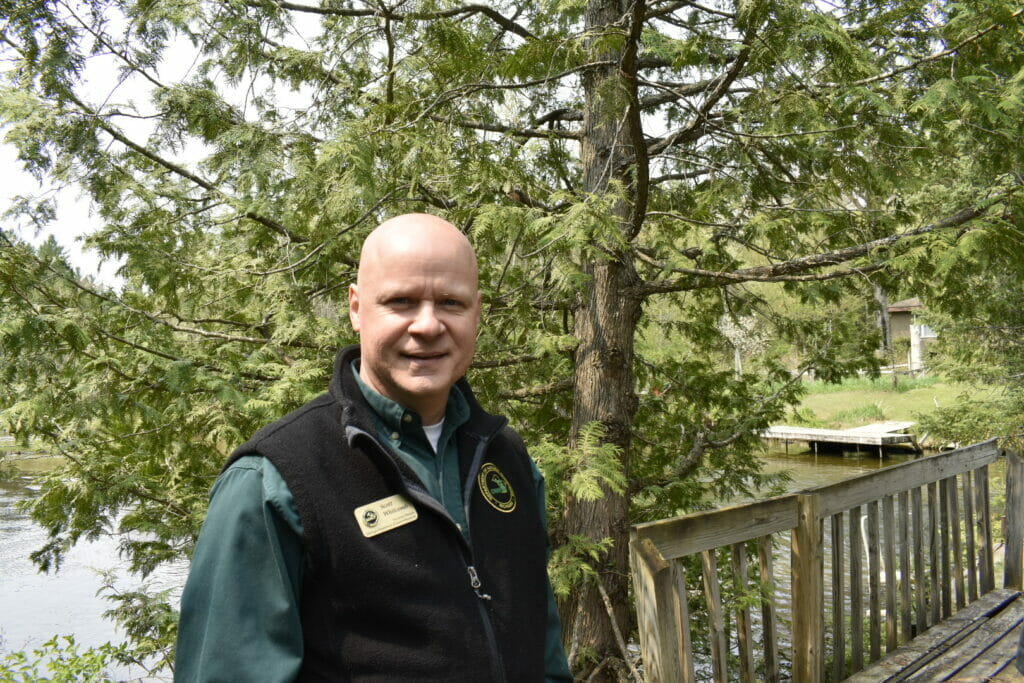
Michigan DNR wouldn’t be able to accomplish that scale of projects without partners like Michigan TU, though. This is one of several projects Michigan TU will conduct as part of the grant, with another dam removal occurring on a tributary to the North Branch of the Au Sable, one in the Manistique Watershed Priority Waters and one site with seven small dams located on a trout stream in southwest Michigan.
“DNR can prioritize, we can align those values from the statewide perspective, but it’s really the on-the-ground conservation groups like TU that are the operational arm. It just expands our capacity. We can’t do it all alone. We don’t have enough people, so TU has expanded our reach,” Whitcomb said.
The America the Beautiful Challenge grant is just scratching the surface of Michigan’s potential to cool its trout rivers, even in the face of climate change. The scale of the opportunity excites Burroughs.
“Our dams are all warming our coldwater streams, so to have the ability to literally make a long section of river two to ten degrees colder, by removing one dam, is incredibly powerful,” Burroughs said. “And then multiply that by the fact that there are hundreds on every watershed, there are thousands in the state, at a time when people feel a little powerless about climate change and what it may do to coldwater fisheries.”
“We can make our rivers colder than they already are today.”



